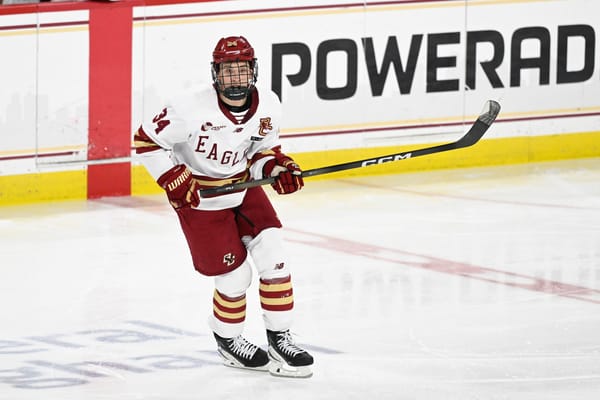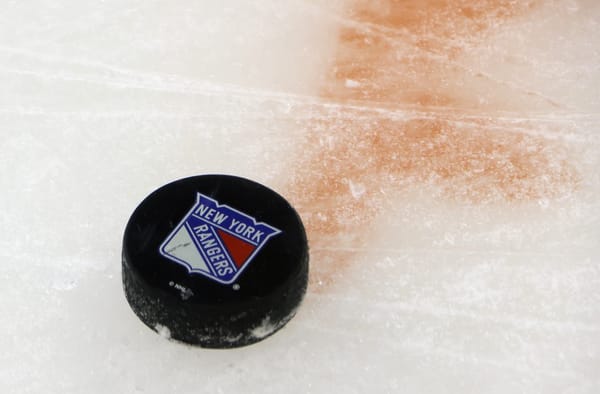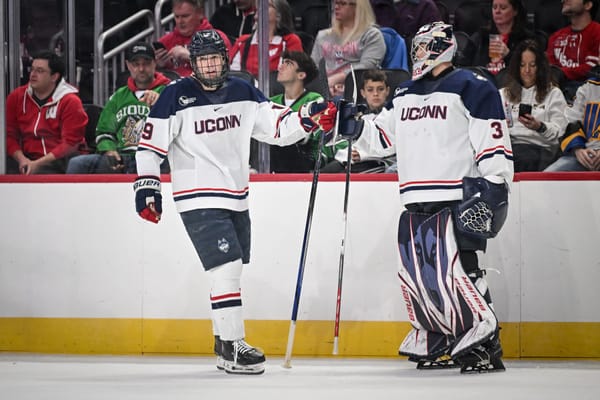2020 Report Card: Kaapo Kakko
After becoming the Blueshirts’ highest draft selection in over 50 years, Kakko flashed talent throughout the season, but had a rough rookie campaign overall.
By the time the curtain fell on the New York Rangers’ 2018-19 season, the team’s decision makers likely had a plan to land a single franchise altering winger. Artemiy Panarin had long been rumored to be destined for Manhattan once he hit free agency over the summer of 2019, and that rumor became reality on the opening day of July. What they didn’t have a plan for was the second overall pick in the 2019 Entry Draft landing in their laps and earning the right to add Kaapo Kakko to their organization.
With Kakko and American wunderkind Jack Hughes universally recognized as the top two draft eligible prospects last year, the Rangers’ selection would be an elementary one. The New Jersey Devils held the first overall pick, so whichever prospect the Devils passed on to begin the draft would be New York’s selection immediately afterwards. Ray Shero and the Devils selected Hughes, so Jeff Gorton and the Blueshirts made Kakko a Broadway Blueshirt.
As the Rangers’ highest draft selection since the Original Six era, Kakko came into the NHL with a world’s worth of expectations on his shoulders. So how did he manage them during his rookie season?
Boxcar Stats: 66 GP, 10 G, 13, A, 14 PIM’s, 109 SOG, 14:16 TOI/G
5 on 5 Analytical Metrics: 0.70 Points/60, -4.07 Relative Corsi For%, -6.19 Relative Shots For%, -7.34 Relative Scoring Chances For%, -9.65 HD Scoring Chances For%, -10.21 Relative Expected Goals For%, -29.02 Relative Goals For%, -9.6 Goals Above Replacement, 96.0 PDO
As far as positives go, there isn’t really much to talk about. Kakko did manage to outscore Hughes (7-4-21 in 61 GP) and tie 3rd overall selection Kirby Dach (8-15-23 in 64 GP). However, Kakko’s name was never a part of the Calder conversation as plenty of talking heads in the hockey world expected it to be. The second half of the season was particularly rough for Kakko, as the young Finn only managed a 3-4-7 stat line through the final 30 games of the regular season, and was held off the scoresheet in New York’s qualifying round series. Kakko had some bright moments, but they were few and far between.
Kakko wasn’t put in a great position to succeed, as his most common center throughout the season was Brett Howden, one of the Blueshirts weakest links up front. In spite of that, Kakko’s numbers were horrid across the board by whatever metric you’d like to use to evaluate players.
Brendan Smith was the only player to skate 150+ minutes and score less frequently than Kakko’s 0.7 Points/60. In terms of scoring chances, expected goals, and actual goals, no player on the team had worse relative metrics in any of those stats than Kakko. The shot attempts and shot on goal numbers don’t paint a prettier picture either, as Kakko’s closest neighbors in that regard are the aforementioned Howden and Greg McKegg, who was in over his head as an everyday NHLer this past season.
The picture gets even uglier when you step back and examine how Kakko stacks up with the rest of the league. 385 forwards skated at least 350 5-on-5 minutes during the regular season, and Kakko finds himself towards or at the bottom of that list of forwards in every meaningful metric publicly available:
Kakko’s ranks in Points/60 (373rd), relative shot attempts, (329th) shots on goal, (367th) scoring chances, (365th) and expected goals (380th) are all among the dregs of the league. However, his ghastly relative goals results sum up his rookie season succinctly as possible. With Kakko on the ice, the Rangers were outscored 40-16 at 5-on-5. With Kakko riding the bench, the Rangers outscored teams 134-103. That’s a 45 goal swing, and no forward in the league saw his team’s goal differential swing so dramatically in the right direction whenever he watched from the bench. Some of that is due to the massive talent gap between the Blueshirts’ top forwards and their depth forwards, but that doesn’t make the statistic any less ludicrous.
If you’re looking for more of an all-encompassing metric, Goals Above Replacement does that, and it isn’t kind to Kakko either. He was the only forward in the league more than 7.5 goals in the red, and he blew past that mark by posting -9.6 GAR. Only Johnny Boychuk and P.K. Subban eclipsed Kakko in that department, and it took those two over 1,100 and 1,500 minutes of ice time respectively compared to Kakko’s 942 minutes.
A narrative emerged throughout the season attributing Kakko’s poor performance throughout the season to fatigue. Kakko played 50 games during the 2018-19 campaign for TPS in Finland, as well as 17 games for the Finnish national team split between the World Juniors in December and the IIHF World Championships in May, earning gold medals in both events. He participated in the Rangers’ prospect camp following the draft, as well as the Traverse City tournament in September before drawing into the lineup 66 times this past season.
There’s some degree of legitimacy to that, and Kakko’s strong performance during the qualifying round series is a reason to be optimistic heading into next season. In spite of that, fatigue can only justify a dip in performance rather than a full-on crater. There’s a legitimate argument to be made that Kakko was the worst every day forward in the entire league during the 2019-20 campaign, and that’s something that can’t happen again.
Final Thoughts:
There’s no sugarcoating going on here. Kaapo Kakko was one of the worst forwards both on the Rangers and throughout the league last season. That does not make him a bust, nor does it mean the Rangers erred in using their 2nd overall selection on him last summer. Kakko played a majority of the season as an 18 year old, only turning 19 in February. 99.99% of future NHLers spent their age 18 season in major juniors, the NCAA, or literally any other league where the competition isn’t as stiff as it is in the NHL.
The players selected directly before and after him didn’t set the league on fire this season either, so there’s no reason to panic yet. When the 2020-21 campaign kicks off, Kakko will have only played three hockey games in the preceding nine months. That’s all the rest an athlete could ever ask for and more. If Kakko is able to rest up and turn in a breakout sophomore season, the nightmare that his rookie campaign was will become a distant memory.
Author Grade: F
Masthead Average: C (1 B-, 3 C+, 2 C, 2 C-, 2 F)
All data via Natural Stat Trick, Evolving Hockey and NHL.com





